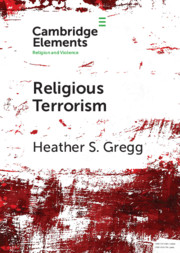Element contents
Religious Terrorism
Published online by Cambridge University Press: 26 June 2020
Summary
- Type
- Element
- Information
- Online ISBN: 9781108583992Publisher: Cambridge University PressPrint publication: 16 July 2020
Bibliography
- 11
- Cited by



